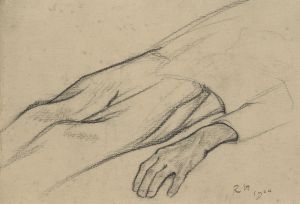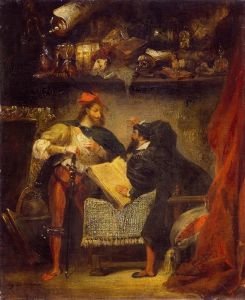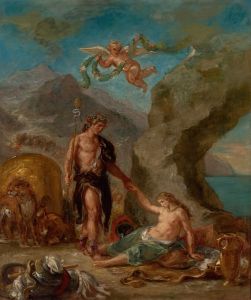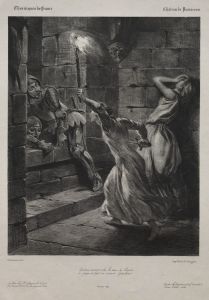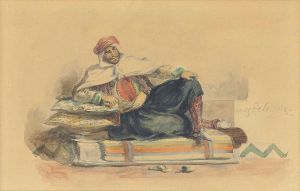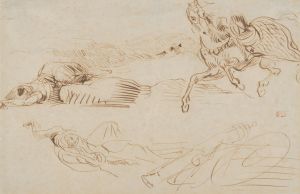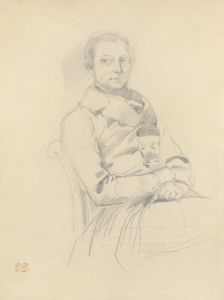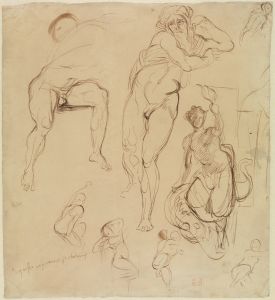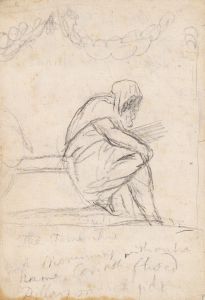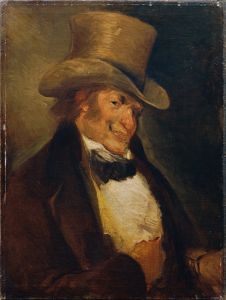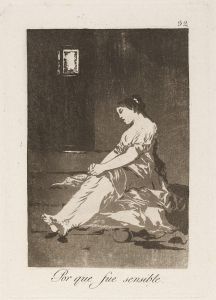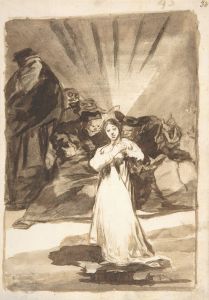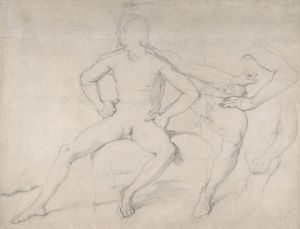
Angelica and the wounded Medoro
A hand-painted replica of Eugène Delacroix’s masterpiece Angelica and the wounded Medoro, meticulously crafted by professional artists to capture the true essence of the original. Each piece is created with museum-quality canvas and rare mineral pigments, carefully painted by experienced artists with delicate brushstrokes and rich, layered colors to perfectly recreate the texture of the original artwork. Unlike machine-printed reproductions, this hand-painted version brings the painting to life, infused with the artist’s emotions and skill in every stroke. Whether for personal collection or home decoration, it instantly elevates the artistic atmosphere of any space.
Eugène Delacroix, a leading figure of the French Romantic movement, is renowned for his vibrant use of color and dynamic compositions. One of his lesser-known works, "Angelica and the Wounded Medoro," exemplifies his interest in literary themes and his ability to convey emotion and drama through painting. This artwork draws inspiration from the epic poem "Orlando Furioso" by Ludovico Ariosto, a popular source of inspiration for many artists during the Romantic period.
"Orlando Furioso," written in the early 16th century, is an Italian epic that combines romance, chivalry, and fantasy. It tells the story of the knight Orlando and his unrequited love for Angelica, a princess of Cathay. In the poem, Angelica falls in love with Medoro, a wounded Saracen knight, whom she nurses back to health. Delacroix's painting captures this tender moment between Angelica and Medoro, highlighting themes of love, compassion, and the healing power of care.
Delacroix's interpretation of this scene is characterized by his signature use of rich, expressive colors and dynamic brushwork. The composition focuses on the intimate interaction between the two figures, with Angelica depicted as a nurturing and compassionate presence. Her gentle demeanor and the careful attention she gives to Medoro's wounds emphasize the emotional connection between them. Medoro, in turn, is portrayed as vulnerable yet grateful, his expression conveying a sense of relief and admiration for Angelica.
The background of the painting is typically Romantic, with a lush, natural setting that enhances the sense of seclusion and intimacy between the characters. Delacroix's skillful use of light and shadow adds depth to the scene, drawing the viewer's attention to the central figures while also creating a sense of atmosphere and mood. The interplay of light across Angelica's face and Medoro's form further emphasizes the emotional intensity of the moment.
Delacroix's interest in literary subjects was a hallmark of his career, reflecting the broader Romantic fascination with storytelling and the exploration of human emotions. By choosing to depict a scene from "Orlando Furioso," Delacroix not only pays homage to a classic work of literature but also explores universal themes that resonate with audiences. His ability to translate these themes into visual form demonstrates his mastery of both technique and narrative.
"Angelica and the Wounded Medoro" is a testament to Delacroix's artistic vision and his ability to capture the complexities of human emotion. While not as widely recognized as some of his other works, such as "Liberty Leading the People," this painting remains an important part of his oeuvre, showcasing his talent for blending literary inspiration with visual artistry. Through this work, Delacroix invites viewers to engage with the timeless themes of love, compassion, and healing, offering a glimpse into the Romantic spirit that defined much of his artistic output.





